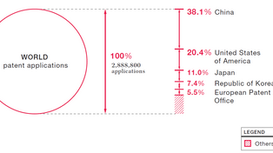How should ownership of a patent be determined?
- Admin

- May 10, 2023
- 1 min read

The patent system is designed to protect the inventions of the individuals who create them, known as patentees. In the case of a joint invention, all contributors who have made a significant contribution should jointly apply for a patent and become patentees. However, those who have not made a substantial contribution, such as those who simply copy drawings or serve coffee for the inventor, are not entitled to be patentees. It is crucial to respect agreements between parties involved in the invention process, as this is a fundamental principle governing civil activities. If some inventors decide not to be patentees for any reason, the remaining inventors may apply for a patent. However, if an inventor not only refuses to be a patentee but also objects to filing an application to maintain the invention as a trade secret, they cannot apply for a patent since applying for a patent requires disclosure, which would affect the inventor's interests.






































Comments